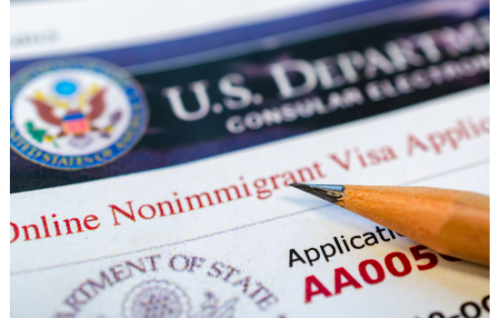What is the Difference Between 42A and 42B Immigration?
The difference between 42A and 42B immigration is that 42A applies to green card holders facing removal, while 42B is for individuals without permanent residency who have strong ties to the U.S. and have lived there for many years.

42A immigration, or Cancellation of Removal for Certain Permanent Residents, offers a crucial lifeline for green card holders facing removal proceedings. This legal provision is not automatically granted but requires a detailed application process. 42B immigration, or Cancellation of Removal for Non-Permanent Residents, is designed for individuals without permanent residency but who have established significant ties in the U.S. This category is particularly relevant for those who have built a life in the U.S. over many years.
In the intricate landscape of U.S. immigration law, understanding the nuances of different legal provisions is more than just a necessity – it’s a lifeline. For those facing the daunting prospect of removal proceedings, the distinctions between 42A and 42B immigration categories can be pivotal.
Whether you are a permanent resident grappling with the challenges posed by potential removal, or a non-permanent resident who has woven their life into the fabric of American society, the nuances of 42A and 42B immigration hold significant implications for your future.
Here, we pick apart each category, exploring their unique requirements, processes, and the critical differences that set them apart.
Overview of 42A Immigration
42A immigration, formally known as Cancellation of Removal for Certain Permanent Residents, offers a crucial lifeline for green card holders facing removal proceedings. This legal provision is not automatically granted but requires a detailed application process. Key aspects include:
Eligibility Criteria: To qualify, applicants must have held permanent resident status for at least five years, have continuously resided in the U.S. for seven years after lawful admission, and not have been convicted of an aggravated felony.
Application Process: The process involves submitting Form EOIR-42A to the Executive Office for Immigration Review, along with supporting documents that demonstrate compliance with the eligibility criteria.
Discretionary Relief: The decision to grant 42A is at the immigration judge’s discretion, based on factors like family ties in the U.S., employment history, community service, and the nature of the offense leading to removal proceedings.
Potential Outcomes: If granted, the individual can retain their permanent resident status. If denied, the individual may face deportation.
A conversation on 42A immigration typically arises when a permanent resident of Louisiana, for example, who has been living in the U.S. for a significant period, faces deportation due to a criminal conviction or violation of immigration laws. (For more detailed information on related legal terms and implications, visit Rozas’ Criminal Defense Legal Glossary.)
Why might a green card holder face removal proceedings?
Green card holders may face removal proceedings due to criminal convictions, violations of immigration laws, or engaging in fraudulent activities related to their immigration status. These actions can trigger legal processes that challenge their right to remain in the U.S., making it essential for permanent residents to adhere strictly to legal and immigration regulations.
What types of evidence are crucial in a 42A immigration case?
Crucial evidence in a 42A immigration case includes documentation of continuous residence in the U.S., proof of good moral character, and any mitigating factors relevant to the offense leading to removal proceedings. This evidence can range from employment records and community involvement to character references and legal documents, all of which collectively support the applicant’s case for remaining in the country.
How can an applicant demonstrate ‘good moral character’ in 42A applications?
To demonstrate ‘good moral character’ in 42A applications, an applicant should provide evidence such as a clean criminal record, consistent employment history, community service records, and character references from reputable sources. This documentation should reflect the applicant’s adherence to societal norms and laws, and their positive contributions to their community, thereby substantiating their claim of good moral character.
Exploring 42B Immigration: What Sets It Apart?
42B immigration, or Cancellation of Removal for Non-Permanent Residents, is designed for individuals without permanent residency but who have established significant ties in the U.S. This category is particularly relevant for those who have built a life in the U.S. over many years. Key features include:
Eligibility Requirements: Applicants must prove a continuous physical presence in the U.S. for at least ten years, demonstrate good moral character during this period, and show that removal would cause exceptional and extremely unusual hardship to their U.S. citizen or permanent resident spouse, parent, or child.
Application Process: The process involves submitting Form EOIR-42B, along with evidence supporting the claims of continuous presence, good moral character, and hardship.Limited Relief: The U.S. government caps the number of individuals who can be granted 42B each year, making it a competitive and uncertain process.
Consideration of Hardship: The hardship to family members must be significantly greater than the usual hardship encountered in deportation cases.
Discussions about 42B immigration often occur in the context of non-permanent residents in Louisiana, for example, who have established deep familial and community ties in the U.S. and are seeking to avoid deportation due to the extreme hardship it would cause to their U.S. citizen or permanent resident relatives.
This situation closely aligns with family-based immigration services offered on our Marriage and Family Visas section.
What does ‘exceptional and extremely unusual hardship’ mean in 42B cases?
‘Exceptional and extremely unusual hardship’ in 42B cases refers to a level of hardship that significantly surpasses what is normally experienced in deportation. This may include factors like serious health issues of a U.S. citizen or permanent resident family member that require the applicant’s care, or unique educational or psychological needs of children. The hardship must be to a U.S. citizen or permanent resident spouse, parent, or child, and not just to the applicant.
How can continuous physical presence in the U.S. be proven for 42B eligibility?
To prove continuous physical presence for 42B eligibility, applicants need to provide documentation that shows they have been in the U.S. for at least ten uninterrupted years. This can include employment records, school records, medical records, or affidavits from community members. Breaks in presence, especially those over 90 days, can disqualify an applicant, so detailed and consistent documentation is crucial.
What strategies enhance the chances of success in the 42B application process?
Enhancing chances of success in the 42B application process involves thorough preparation and strong documentation. Applicants should gather comprehensive evidence to support their claims of hardship, good moral character, and continuous presence. It’s also beneficial to include personal stories and testimonies from community members or family. Seeking the assistance of an experienced immigration attorney can provide crucial guidance and increase the likelihood of a favorable outcome.
Key Differences Between 42A and 42B Visa Categories
Understanding the distinctions between 42A and 42B immigration is crucial for those seeking relief from removal. The primary differences are:
Residency Status: 42A is for permanent residents, while 42B is for non-permanent residents.
Residency Requirements: 42A applicants must have been permanent residents for at least five years, while 42B applicants need ten years of continuous physical presence in the U.S.
Relief Limitations: 42B has an annual cap on approvals, which is not the case for 42A.Hardship Considerations: 42B requires proving ‘exceptional and extremely unusual hardship’ to qualifying relatives, a criterion not required for 42A.
To clearly understand the differences between 42A and 42B immigration categories, let’s start with a comparative table:
Residency Status: For permanent residents – For non-permanent residents
Residency Requirements: Must have been permanent residents for at least five years – Need ten years of continuous physical presence in the U.S.
Relief Limitations: No annual cap on approvals – Annual cap on approvals, making it competitive
Hardship Considerations: Not required to prove ‘exceptional and extremely unusual hardship’ – Must prove ‘exceptional and extremely unusual hardship’ to qualifying relatives
The table above succinctly outlines the fundamental differences between 42A and 42B immigration categories.
Understanding the key differences between 42A and 42B visa categories is crucial for several reasons:
Targeted Application: Each category serves a distinct group of individuals – 42A for permanent residents and 42B for non-permanent residents. Knowing which category applies to an individual’s situation is the first step in pursuing the correct legal pathway for cancellation of removal. This targeted approach prevents misapplication and saves time and resources.
Eligibility and Requirements: The eligibility criteria and requirements for 42A and 42B are significantly different. Understanding these differences ensures that applicants can accurately assess their eligibility and gather the appropriate documentation, thereby increasing the likelihood of a successful application.
Strategic Preparation: The distinct requirements, especially regarding residency status and hardship considerations, necessitate tailored preparation for each category. For instance, the need to demonstrate ‘exceptional and extremely unusual hardship’ in 42B applications requires gathering specific types of evidence that may not be relevant for 42A applications.
Managing Expectations: Awareness of the limitations and opportunities within each category, such as the annual cap on 42B approvals, helps applicants set realistic expectations about the process and potential outcomes.
Legal Representation: Understanding these differences is also vital for effective legal representation. It guides attorneys in providing accurate advice, preparing a strong case, and navigating the complexities of each specific category.
Comprehending the distinctions between 42A and 42B visa categories is essential for effective and efficient navigation of the U.S. immigration system, particularly for those seeking relief from removal. It ensures that applicants and their legal representatives can make informed decisions and prepare the strongest possible case under the applicable category.
Understanding Visa Requirements for 42A and 42B
Navigating the visa requirements for 42A and 42B immigration categories is a critical step for individuals seeking relief from removal in the United States. These requirements, while distinct for each category, share a common need for meticulous documentation and a thorough understanding of immigration law.
Here’s a deeper dive into what applicants need to know:
42A Immigration Visa Requirements
Residency Duration: Applicants must have been permanent residents for at least five years.
Continuous Presence: A requirement of seven years of continuous residence in the U.S. after lawful admission is essential.
Criminal Record: Applicants must not have been convicted of an aggravated felony. The nature and details of any criminal record can significantly impact eligibility.Discretionary Factors: The immigration judge will consider factors such as family ties within the U.S., employment history, community service, and the nature of the deportation grounds.
42B Immigration Visa Requirements
Physical Presence: A critical requirement is having lived continuously in the U.S. for at least ten years.
Moral Character: Demonstrating good moral character during this period is essential. This includes an assessment of criminal history, community involvement, and general conduct.
Hardship Consideration: Proof of exceptional and extremely unusual hardship to a U.S. citizen or permanent resident spouse, parent, or child if the applicant were to be removed.
Annual Cap: Awareness of the annual limit on approvals under 42B is important, as this can affect the chances of success.
Common Considerations for Both Categories:
Documentation: Comprehensive documentation is key. This includes proof of residence, character references, and any other relevant legal documents.
Legal Representation: Given the complexities and nuances of immigration law, securing experienced legal representation, like Rozas, is highly advisable. They can provide guidance on the specific documentation needed, represent the applicant in court, and help navigate the challenges of the application process.
Understanding and meeting the visa requirements for 42A and 42B immigration is a complex process that demands careful attention to detail and a thorough understanding of legal procedures. With the right preparation and legal support, applicants can effectively navigate this process, increasing their chances of a favorable outcome.
Frequently Asked Questions
Can family members influence the outcome of a 42A or 42B application?
Family ties play a significant role in 42B applications, where demonstrating hardship to U.S. citizen or permanent resident relatives is crucial. In 42A cases, while family ties are less formally weighed, they can still impact the judge’s discretionary decision, especially in showing the applicant’s community integration and potential impact of removal.
What happens if an applicant has a brief trip outside the U.S. during the 42B ten-year requirement?
Brief trips outside the U.S. can disrupt the continuous physical presence requirement for 42B. Generally, absences of more than 90 days or multiple absences totaling 180 days can disqualify an applicant, but each case is evaluated individually.
Are there waivers available for aggravated felony convictions in 42A applications?
Aggravated felony convictions typically disqualify an applicant from 42A eligibility. There are very limited waivers available, and they depend on specific circumstances, such as the nature of the crime and time since conviction.
How does an applicant prove ‘good moral character’ for 42B?
To prove ‘good moral character’ for 42B, applicants should provide evidence like employment history, community involvement, absence of criminal record, and testimonials from community members. This evidence should cover the entire ten-year period required for continuous presence.
Can denied 42A or 42B applications be reapplied or reopened?
Denied 42A or 42B applications can sometimes be reopened or refiled, especially if there are new facts or circumstances that significantly affect the case. However, this is complex and requires legal expertise to navigate.
How long does the 42A or 42B application process typically take?
The processing time for 42A and 42B applications varies widely, often taking several years. The duration depends on the specific immigration court’s backlog, the complexity of the case, and the thoroughness of the application.
Does employment history impact a 42A or 42B application?
Employment history can positively impact both 42A and 42B applications. Consistent employment demonstrates stability and contribution to society, which can be influential in the discretionary decision-making process, especially in 42B cases where demonstrating ties to the U.S. is crucial.
A Final Word on Understanding the Difference Between 42A and 42B Immigration
As we conclude our exploration of the differences between 42A and 42B immigration, it’s clear that navigating these pathways requires careful consideration and detailed preparation.
If you find yourself or a loved one facing removal proceedings, understanding which category applies to your situation is the first critical step.
Here’s what you can do right now:
Assess Your Situation: Review your circumstances against the eligibility criteria for 42A and 42B. Determine which category aligns with your residency status and situation.
Gather Documentation: Start compiling necessary documents, such as proof of continuous residence, evidence of good moral character, and, for 42B applicants, evidence of hardship to qualifying relatives.
Seek Professional Guidance: Immigration law is complex, and the stakes are high. Professional legal advice can make a significant difference in the outcome of your case.
The journey through immigration law, particularly when it involves potential removal from the U.S., is intricate and challenging. Understanding the nuances between 42A and 42B immigration is essential for mounting an effective case and securing the best possible outcome.
At Rozas, we understand the complexities of immigration law and the profound impact it has on individuals and families. Our team of experienced Louisiana attorneys is dedicated to providing personalized and compassionate legal assistance, guiding you through every step of your immigration journey.
Don’t navigate this journey alone. Contact Rozas for expert legal support and representation. Whether you’re seeking relief under 42A or 42B, or simply need advice on your immigration matters, we are here to help.
Answer by David Joseph Rozas
David Rozas is an experienced criminal and immigration lawyer and one of the founding partners of Rozas & Rozas Law Firm. He has been with the firm since 2004, joining his brother, Greg in practice. David concentrates his law practice on criminal defense and immigration.

.svg)















